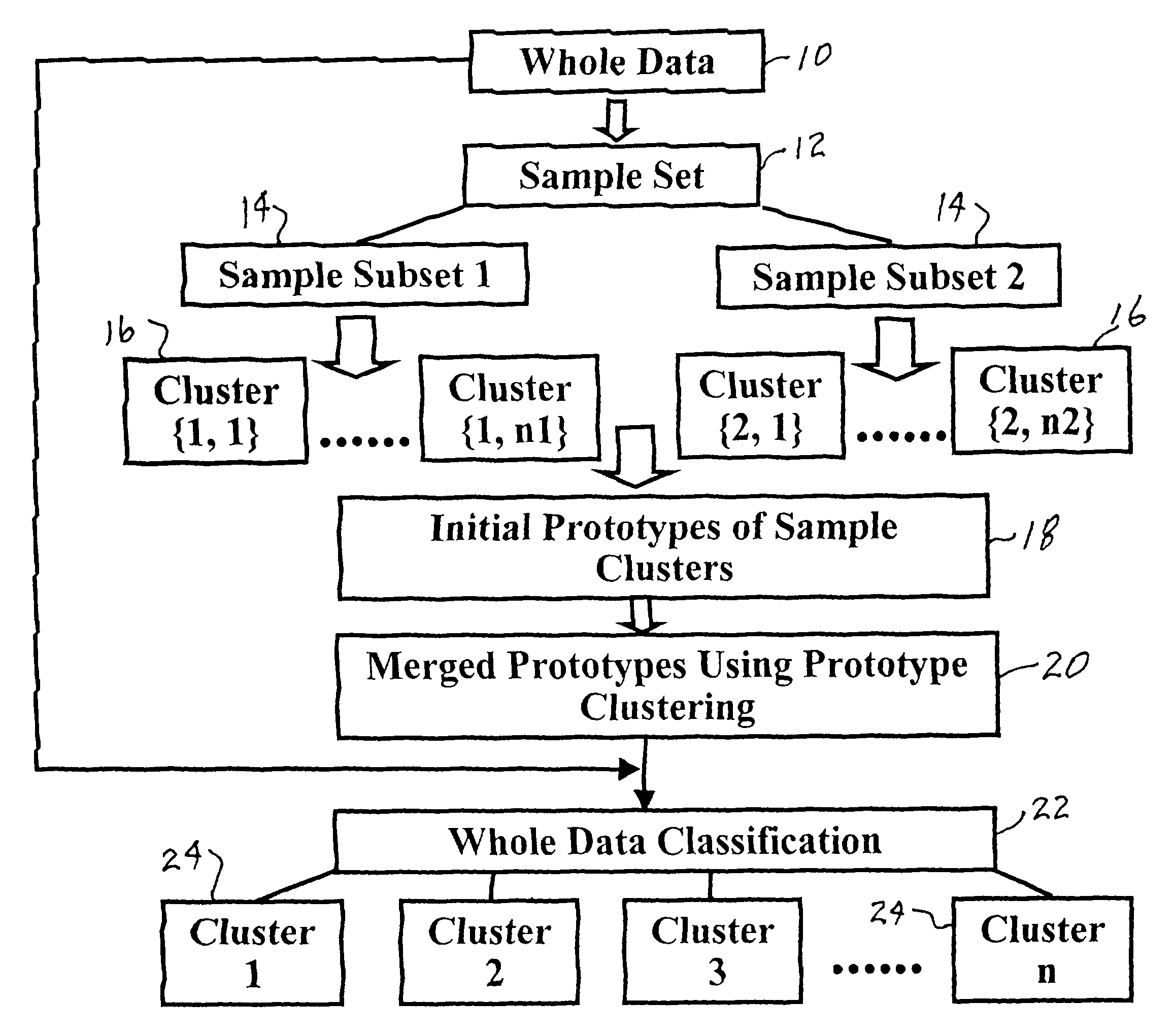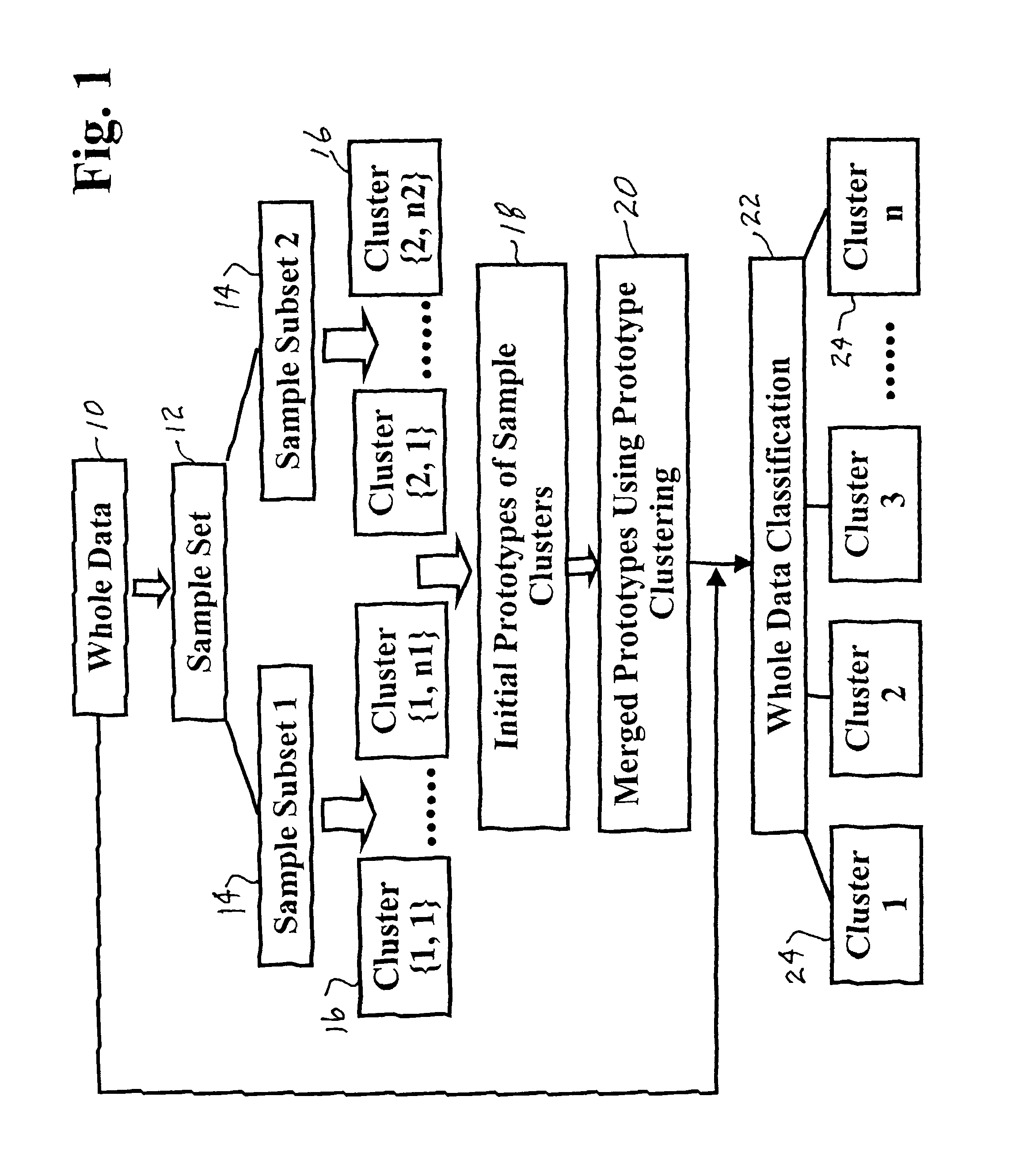Neural network training data selection using memory reduced cluster analysis for field model development
a neural network and cluster analysis technology, applied in computing models, instruments, electric/magnetic computing, etc., can solve the problems of increasing the cost of drilling the well, increasing the cost of open hole logging, and physical inability to run an open hole logging tool in the hol
- Summary
- Abstract
- Description
- Claims
- Application Information
AI Technical Summary
Benefits of technology
Problems solved by technology
Method used
Image
Examples
cased
[0084 Hole Production Logs
[0085]Subsurface Core Data
[0086]Formation Pressure Data
[0087]Vertical Seismic Profiling
[0088]Other types of data such as measurements of formation samples, e.g. drill cuttings or sidewall cores, may also be used. The input data may also include measurements taken from the earth's surface, e.g. seismic data, which may be depth correlated with borehole log data. In similar fashion, the actual target data used in training may be data from more than one logging tool and / or may include non-borehole data such as seismic data. Predicted target measurements may likewise be the types of measurements normally measured by a logging tool or data normally measured by other means, e.g. seismic.
[0089]Another alternative application for clustering techniques (including Self Organization Mapping) as applied to subsurface and / or surface measurements is facies identification. Facies identification from logging data can be an extremely important predictive product from these t...
PUM
 Login to View More
Login to View More Abstract
Description
Claims
Application Information
 Login to View More
Login to View More - R&D
- Intellectual Property
- Life Sciences
- Materials
- Tech Scout
- Unparalleled Data Quality
- Higher Quality Content
- 60% Fewer Hallucinations
Browse by: Latest US Patents, China's latest patents, Technical Efficacy Thesaurus, Application Domain, Technology Topic, Popular Technical Reports.
© 2025 PatSnap. All rights reserved.Legal|Privacy policy|Modern Slavery Act Transparency Statement|Sitemap|About US| Contact US: help@patsnap.com



